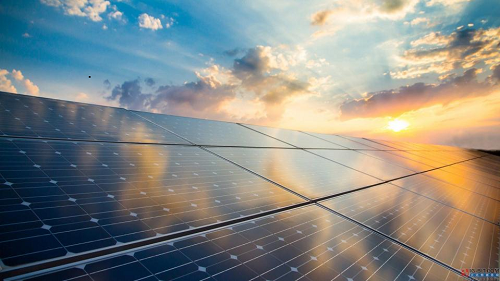Recently, the National Energy Administration issued a notice on publicly soliciting opinions on the *Measures for the Administration of Photovoltaic Power Station Development and Construction (Second Draft for Comments)*. In response to the new situation, tasks and requirements faced by the photovoltaic industry, it further standardizes the development and construction management of photovoltaic power stations, ensures the clean, low-carbon, safe and efficient operation of photovoltaic power stations and power systems, and promotes the sustained and healthy development of the photovoltaic industry.
Against the backdrop of accelerating the achievement of carbon peak and carbon neutrality goals, this is just one of China's policies to accelerate the development of new energy industries including photovoltaics. According to incomplete statistics, since the beginning of this year, relevant departments such as the National Development and Reform Commission, the Ministry of Industry and Information Technology, and the National Energy Administration have issued more than 50 related policies to support the development of the photovoltaic industry, covering various aspects such as guidance and planning, innovative development, supervision and consumption, and financial subsidies.

During the more than ten years of development of China's photovoltaic industry, it has gone through several twists and turns, including the initial stage, development stage, adjustment stage, and recovery stage, and is now entering a stage of high-quality development. At present, China's photovoltaic industry leads the world in terms of manufacturing scale, industrialization technology level, application market expansion, and industrial system construction. China has the world's strongest photovoltaic R&D capabilities, with the number of patent applications in the field of renewable energy ranking first in the world. At the same time, technological progress has led to a rapid decline in the cost of photovoltaic power generation, which is roughly equivalent to the cost of thermal power. Photovoltaic power generation has gained the competitive strength for grid parity, and is moving towards parity of photovoltaic-storage integration, while traditional energy storage is gradually moving towards intelligent energy storage. With the advent of the era of low-carbon consumption and digitalization, China's photovoltaic industry has ushered in an unprecedented historical opportunity. It is accelerating digital upgrading and transformation, and continuously integrating with information industries such as the Internet, big data, and cloud computing, with the process of industrial intelligence accelerating.
Since the beginning of this year, cross-border capital has flocked to the photovoltaic track, photovoltaic enterprises have rushed to expand production, and raw material prices have remained "high", releasing signals of industrial chain imbalance. Recent policies aim to rationally guide the pace of construction and expansion of upstream and downstream industries, optimize the regional layout of the industry, avoid industrial convergence, vicious competition and market monopoly. At the same time, they encourage photovoltaic enterprises to shift from pursuing scale effects and price wars to pursuing quality and efficiency, enhance core competitiveness, and promote high-quality development of the photovoltaic industry. China's photovoltaic industry has become a strategic emerging industry with international competitiveness, and is expected to play a more important role in the global energy transition in the future.
(Source: China Economic Times)



